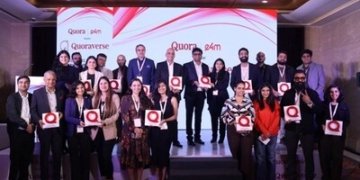New York, NY, April 22, 2025 –(PR.com)– What if students could simulate the first quantum attack on Bitcoin-style encryption—and get paid for it? Qryptonic’s new roadmap unlocks that possibility while issuing a warning to enterprises: the post-quantum future is already here. Qryptonic, LLC, Florida’s first quantum-powered cybersecurity firm, today announced the release of a strategic roadmap designed to help students and researchers compete for Project Eleven’s high-stakes Q-Day Prize: 1 Bitcoin awarded to the team that achieves the largest quantum-only break of an elliptic curve cryptographic (ECC) key before April 5, 2026.
With IBM’s Cryptographic Agility Study revealing over 70% of global enterprises remain vulnerable to quantum attacks, Qryptonic’s initiative provides a rare glimpse into real-world quantum penetration strategies. The roadmap empowers a new generation of quantum learners to simulate attacks on scaled-down ECC keys, serving as both an educational blueprint and a warning about the urgency of post-quantum readiness.
“This isn’t about breaking Bitcoin—it’s about breaking complacency,” said Jessica Gold, Head of PR at Qryptonic. “We’re giving students the tools to experiment with real quantum techniques and forcing the cybersecurity industry to confront a future that’s coming faster than most are prepared for.”
Strategic, Responsible, Actionable
The roadmap centers on breaking a 3-bit ECC key—a milestone previously considered near the edge of current quantum capabilities. With 4-bit as a stretch goal, the document outlines a phased 12-month execution plan including:
1. Multi-Platform Execution: Starting with IonQ Forte’s 36 trapped-ion qubits, with fallbacks to IBM Heron and Google Willow.
2. Advanced Error Mitigation: Incorporating techniques like zero-noise extrapolation, dynamical decoupling, and probabilistic error cancellation.
3. Real-Time Adaptation: Hardware switching, statistical amplification, and team structure designed to pivot rapidly based on emerging results.
4. Public Disclosure Protocols: Media-ready frameworks to responsibly communicate results and avoid panic.
“This roadmap reflects what quantum hardware can realistically achieve in 2025,” said Jessica Gold. “Simulating a 3-bit ECC break isn’t science fiction anymore. It’s a call to arms for cryptographic modernization across all sectors.”
“What’s at stake here isn’t a toy challenge—it’s the future of encryption,” said Jason Nathaniel Ader, Chief Innovation Officer of Qryptonic LLC and author of The Quantum Almanac 2025–2026. “This roadmap shows that even small cryptographic victories on today’s quantum hardware reveal deep vulnerabilities in tomorrow’s digital infrastructure. We built this guide to challenge students, empower defenders, and pressure enterprises to act before Q-Day becomes yesterday’s news.”
The roadmap builds on Qryptonic’s flagship platform, QStrike™, the cybersecurity industry’s first quantum-powered penetration testing product. This follows Qryptonic’s $1 Million Quantum Penetration Challenge, launched in December 2024, which rewards organizations whose infrastructure can withstand simulated quantum attacks.
The company’s timeline calls for:
· Roadmap deployment starting May 2025.
· IonQ test runs in Q2 and Q3 2025.
· Internal submission deadline by March 5, 2026, with official contest deadline one month later.
“Post-quantum readiness is no longer optional,” Gold added. “Enterprises must act now. And students? They now have a map to make history.”
About Qryptonic, LLC
Qryptonic, LLC is a global leader in quantum cybersecurity, operating from Miami, New York, and Beer Sheva, Israel. With its mission to make organizations Post Quantum Ready, Permanently, Qryptonic delivers quantum-grade audits, encryption hardening, and breach simulation for Fortune 500 clients and national infrastructure leaders. Its flagship platform, QStrike™, simulates quantum attacks using algorithms like Shor’s and Grover’s to help organizations validate their quantum threat posture.















